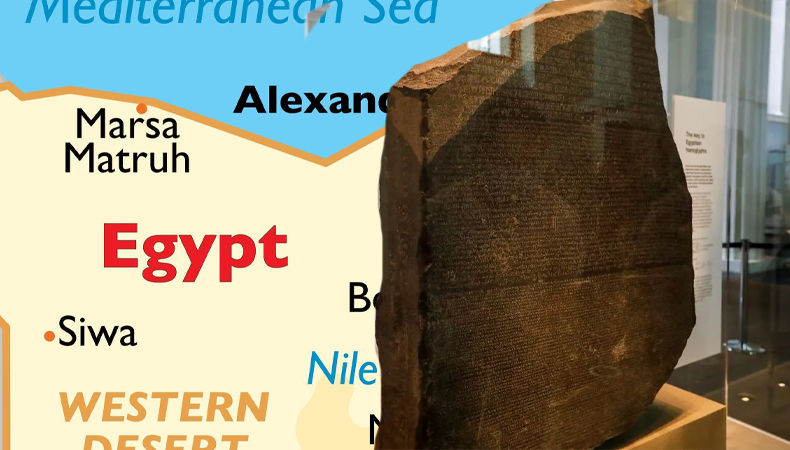Egyptians ask British Museum to give Rosetta Stone back

The controversy over who owns ancient relics has become a bigger problem for museums in Europe and America, and the focus has shifted to the Rosetta Stone, the object in the British Museum that receives the most visitors.
After the black granite slab was recovered from Egypt by British imperial forces in 1801, its writings proved to be the key to understanding ancient Egyptian hieroglyphics.
Thousands of Egyptians are now calling for the stone’s return as Britain’s largest museum commemorates the 200th anniversary of the decipherment of hieroglyphics.
The fact that the stone is at the British Museum, according to Monica Hanna, head of the Arab Academy for Science, Technology & Maritime Transport and coordinator of one of two petitions demanding the stone’s return, “is a symbol of Western cultural warfare against Egypt.”
The imperial conflicts between Britain and France had an impact on the acquisition of the Rosetta Stone. French archaeologists discovered the stone in 1799 near the northern town of Rashid, sometimes known as Rosetta to the French, during Napoleon Bonaparte’s military annexation of Egypt. The stone and more than a dozen other artifacts were given to the British in accordance with the conditions of an 1801 surrender agreement between the generals of the two sides after British forces beat the French in Egypt.
Read | Egypt, Turkiye to re-appoint ambassadors soon
Since then, it has stayed in the British Museum. According to Hanna’s petition, which has 4,200 signatures, the stone was taken unlawfully and is a “spoil of war.” The assertion is supported by a petition with more than 100,000 signatures that was started by former Egyptian minister of antiquities Zahi Hawass and is almost verbatim in content. According to Hawass, Egypt had no input towards the 1801 accord.
This is disputed by the British Museum. According to a statement from the Museum, a representative of Egypt signed the 1801 pact. An Ottoman admiral who fought alongside the British against the French is referred to in this phrase. At the time of Napoleon’s invasion, Egypt was officially under the control of the Ottoman sultan in Istanbul.
The Museum added that no request for its repatriation has been made by the Egyptian government. It further mentioned that 21 of the 28 known copies of the identical engraved decree are still in Egypt.
The original stone copy is in dispute because of its unparalleled importance to Egyptology. The slab, which was carved in the second century B.C., has three translations of a decree referring to an agreement between a group of Egyptian priests and the then-ruling Ptolemies. The first inscription is written in traditional hieroglyphics, the second is written in a streamlined form of hieroglyphic called Demotic, and the third is written in Ancient Greek.




